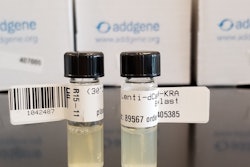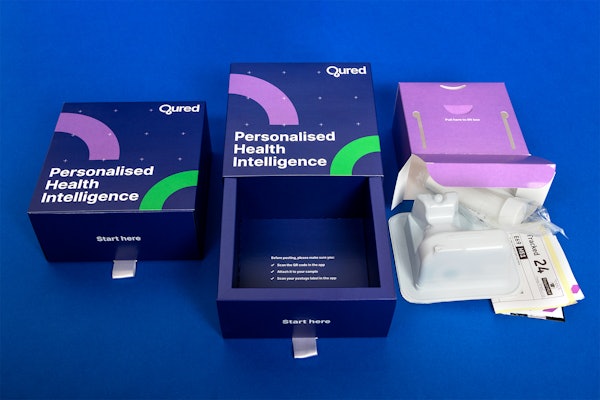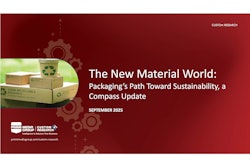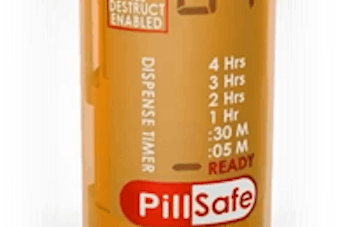Making progress on gene editing tool CRISPR (Clustered Regularly Interspaced Short Palindromic Repeats) is the Cambridge, MA-based Broad Institute of MIT and Harvard, which aims to improve human health in part through genomics. A video on its website demonstrates genome editing with CRISPR-Cas9. Packaging represents an important part of the process.
Broad Institute scientists deposit DNA-based materials called plasmids to Addgene, a global, nonprofit repository that allows scientists from various labs to conduct CRISPR genome editing in their own labs. Addgene describes these gene-laden plasmids as DNA-based research reagents that permit researchers to study isolated genes and their function under controlled conditions. CRISPR systems include the DNA cutting enzyme, often the Cas9 protein.
Addgene distributes more than 65,000 plasmids from 3,800+ labs with an average daily distribution of ~600 plasmids. To keep samples straight, each plasmid sample is given a unique barcode upon entering its facility. Every step of both the intake and the order fulfilment process is tracked with the help of a custom Lab Information Management System (LIMS).
“We store the bacteria, carrying the plasmid frozen in glycerol in 2D barcoded tubes in a -80°C freezer,” explains Kory DelPrete, Laboratory Operations Manager.
“The extreme cold temperature keeps the bacteria dormant long-term, while glycerol allows the bacteria to survive the freezing process. When an order is placed for the plasmid, a member of our lab team will take a little of the frozen bacteria and place it in a 1-dram glass vial containing agar, a growth medium.”
Addgene’s frozen plasmid stocks are kept in plastic 2D barcoded vials from Micronic. “The built-in barcode allows proper sample tracking and organization,” says DelPrete. Addgene sources them from Dangerous Goods, a division of Berlin Packaging. Addgene lab members label the glass vials with a barcoded label that’s generated by printers from Zebra, ensuring proper tracking and organization. Addgene is also considering direct barcode printing on the vials on a system from Tubewriter.
Bacteria is shipped at room temperature in glass vials, also supplied by Berlin Dangerous Goods. Addgene adheres to the standard Category B UN 3373 shipping codes for biological materials. This process includes the following steps:
- Wrapping the glass vial in a protective “bubble”-type material to minimize breakage
- Adding a piece of cloth to absorb any possible leak
- Placing the wrapped vials in a clear sealed plastic pouch to reduce possible exposure en route
- Packing the pouch in a sturdy shipping box that maintains structural integrity throughout distribution
DelPrete notes, “Once the bacteria are ‘revived’ in an agar stab [culture], they have a limited shelf life, but are stable at room temperature for a few weeks if not exposed to extremes of cold or heat. We do need to ensure the bacterial vial gets to the end user in an appropriate time frame and in one piece. The packaging we use is designed to protect the glass vials from physical harm. Certain products, like kits, libraries, and viruses must be shipped on dry ice or wet ice. This prevents possible damage to these samples during extreme shipping conditions or extended time before delivery.”
Addgene distributes CRISPR plasmids exclusively to academic and nonprofit organizations for non-commercial research purposes. The repository does not make any modifications to the deposited materials. Says Lianna Swanson, Senior Director of Biology, “We use global shipping couriers UPS, FedEx, World Courier and DHL, depending on the shipped product and final destination. Our primary shipping vendor is UPS.
“Since over 350 packages leave our facility every day, we’ve embarked on a new initiative to reduce our carbon footprint by using eco-friendly shipping materials,” says DelPrete. “Some of these include recycled plastic bubble wrap, electronic paperwork to reduce paper consumption, and other initiatives to reduce waste during shipping.”
Read Part I of the story here (https://www.logisticsforthelifesciences.com/crispr-technology-embarks-fantastic-voyage-what-packagings-role-part-i). Next: Part III explores how a company supplies both CRISPR gene-editing products and the packaging components used for them. The series concludes with a sidebar that forecasts the future of the CRISPR market.






















